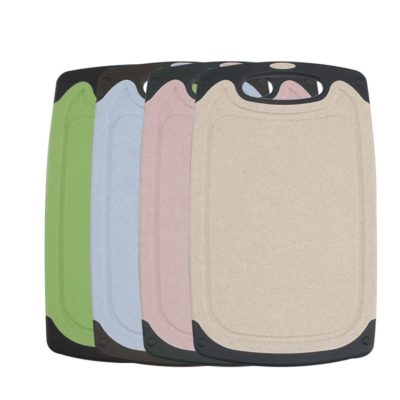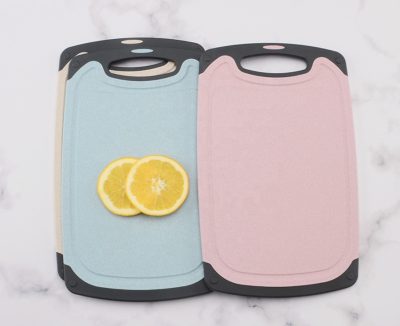How to choose the right plastic cutting board?
At present, there are three types of popular cutting boards on the market, one is wooden cutting board, the other is bamboo cutting board, and the third is plastic cutting board. According to the information of the reporter, a large proportion of citizens still use wooden cutting boards in their homes, and there are many materials such as willow piers, pine boards, and elm boards. Wooden cutting boards and bamboo cutting boards are common in ordinary households, while plastic cutting boards are mostly used by renters. Regardless of the material, each cutting board has its pros and cons.
Wooden boards are durable but not easy to clean. Wooden boards have high density, good toughness and durability, but because of the wide variety of boards, it is not easy to distinguish them. Many wooden cutting boards have peculiar smell and are inconvenient to clean. Among them, poplar is easy to dry and crack and has strong water absorption, which often breeds bacteria. Cutting boards made of willow are relatively good.
Bamboo cutting boards are clean, but not hard hit. Bamboo is a natural green plant. There are not as many types as wood, and it is slightly lighter than wood. It is not easy to be faked, and its quality is relatively stable. Because of its smooth surface, it is relatively easy to clean and can be cleaned. It’s just that the growth cycle of bamboo is shorter than that of wood, so it is slightly less dense than wood, and because the thickness is not enough, it is mostly spliced, so it can’t be hit hard when used.
Plastic sheets are easy to carry, but not durable. The advantage of plastic cutting boards is that they are light, easy to carry, and suitable for migrant workers. However, plastic cutting boards are prone to emit plastic odor at high temperature, and unqualified cutting boards have chemical precipitation, which is harmful to the body. But because plastic cutting boards are relatively easy to clean, buyers generally use them as a second cutting board for cooking cooked food.
When buying a cutting board, try to buy it from a safe place such as a supermarket. The reason why the price of cutting boards marked with product information is slightly higher is because the quality of such cutting boards is guaranteed. There is a certificate of conformity in the sealing bag of the cutting board, which clearly indicates the material, specification, manufacturer, standard number and other information. If there is any quality problem, it can be returned directly. If you buy a “bare board” at a roadside stand, it is difficult to protect your rights if there is a quality problem.
Observe the surface of the cutting board before purchasing. When choosing a bamboo cutting board, you should pay attention to whether the surface of the cutting board is smooth and even, whether it is flat, whether there is warping, whether the color is uniform, and whether there are spots. When choosing a wooden cutting board, look at the texture. Generally, a cutting board with a clear texture and a smooth surface is more durable. For plastic cutting boards, you need to use items to test the load-bearing capacity of the cutting board, and use tools such as knives to imitate the action of chopping vegetables to see if there will be cracks. A good plastic cutting board should have moderate hardness, too hard cutting board is easy to fall off crumbs, too soft cutting board means that the amount of additives added during production is too much, which affects health.







